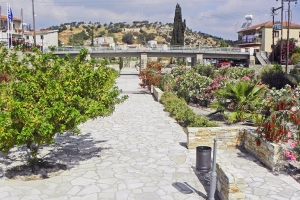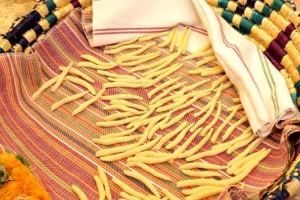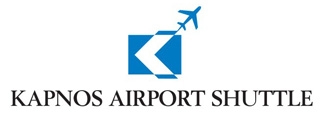SAINT THEODOROS
Telephone: 24322010
The graphic village of Agios Theodoros is found in the province of Larnaka. It is built at the banks of the river Pentashoinos, 80 meters above sea level. It is found roughly 6km from the sea and 3km from the village of Kofinou.
The village accepts a medium annual rainfall around in the 363 millimeters. In the irrigated valley of Pentashoinos as well as in the coastal plain, they are cultivated the citrus fruits (oranges, grapefruits, lemon trees), vegetables, potatoes, melons, fruits and artichokes, while in the remaining regions they are cultivated the cereals (mainly wheat and little barley), the legumes, the veterinary surgeon plants, the olives and carobs
The exploitation of the earth over the length of the valley of river Pentashoinos is very intensive. It is planted from the one end to the other by fruit trees and citrus fruits. At the elevated sides of the valley, there are olives, carobs, "shinos", thyme and rich bushy vegetation.
This southern department of the river Pentashoinos, even though it is calm and silent, surprises the region during the winter months, after it accepts abundant water. It creates other forms, it takes other ways, it abandons pieces of its old way, it destroys gardens and carries plenty of mud towards the sea.
In this particularly valley of Pentashoinos as well as in the coastal plain, they roll up between August and October, innumerable "ampelopoulia" (a species of birds), that use this place in order to rest before they continue their distant travel to some other places of the planet.
The village of Agios Theodoros had big fluctuations concerning its population. In 1881 the residents of the village were 560, they increased to 889 in 1911, to1105 in 1921 and to 1210 in 1960. In 1960 the residents were 525 Greekcypriots and 685 Turkishcypriots. After the Turkish invasion in 1974, the Turkishcypriots abandoned their village and became residents of the possessed villages of Cyprus.The residents in 1982 decreased to 661. In the last inventory of 2001 the residents of Agios Theodoros were 597.
The houses at the village of Agios Theodoros are neither spread out nor densely built. They are built at the two banks, over the length of the river. The local limestone rock was used extensively for the building of the houses, even though almost all the roofs are covered with tiles. Beautiful graphic wooden balconies, outdoors with fat timber of pine, surrounded courtyards, hewers engraved stones around the outdoors, (symbol of a mansion), small passages, other vaulted hewers doors with the date of manufacture of the buildings. One impressive and strong built bridge that links the one part of the village with the other, is the picture of the graphic village of Agios Theodoros.
The way with the company of "anathrika", with crows flying from the one side of the precipice to the other, the dew and the color of the big vegetation, is a real enjoyment. Here under the "anathrikes", people from the village but also many others from the cities, come during the weekends and especially in the winter and spring months, to find the eminent "mushrooms of anathrika".
In the center of the village is found the church of Agios Theodoros, built recently, with a tall dome having the same stature with the belfry. The church was built precisely at the same locality that the old church of the 19th century was found. The only saved part of the old church is the portable icon of Agios Theodoros that was maintained in a special stone-built part in the church, in front of the iconostasis.
Agios Theodoros is indeed the gift of Pentashoinos. Without this river and with the very little medium annual rainfall, the abundant green, the dew, the beauty and particularly the lucrative agricultural
exploitations would have not been present here.
The history of the village is interwoven with a recent tragic event of the Cyprus history. Here in this village, where the Greekcypriots and Turkishcypriots residents were living together for centuries, in November of 1967 their relations were disturbed. From 1964 up to 1967 many problems were created. Turkey threatened with war, due to battles that were created so much in Agios Theodoros and in the neighboring village of Kofinou.
During the Middle Ages there was a village called Pentasxinon. This village is mentioned by Leontios Maxairas in “Xroniko” in paragraph 36.
The village is registered on an old map of Cyprus drawn by cartographer Abraham Ortelius in 1953 under the name S.TODO and PENTASINO. An earthquake on the 24th of April 1491 brought about the ruin of the village as well as the church dedicated to Ayios (Saint) Athanasios. Several people, who survived, left from the village. This earthquake is also mentioned by annalist Athanasios Faris who comes from Kofinou (COD. PARIS GRAEK 624 F 2r) and by German excursionist Alexander, Duke of Bavaria (M.K Encyclopaedia Volume 1 page 220).
During the period of the Frank Occupation, the village was a fief. It was a wealthy area just like the nearby villages of Maroni, Alaminos and Kofinou.
During the period of the Turkish occupation in Cyprus (1571-1878), the district of Pentasxinon was restricted. The fief was divided by the conquerors in big pieces of land known as Tsiflikia and was given to the Turkish officers of Lala-Moustafa and Piale Pasha. The same happened with all the fiefs in Cyprus. The village was gradually deserted.
Gradually people started to move to the village of Ayios Theodoros. Due to the numerous raids that took place in the area, starting from the hill of “Stefani” where the signal for the ships’ arrival was given, people tried to save their lives by going to the village of Ayios Theodoros. People chose Ayios Theodoros because of its location; the village lies behind high hills and cannot be seem from the sea. What is important to note, is that both villages were inhabited at the time and none was deserted during this period. One of the main reasons for the desertion of Pentasxinon was the stagnant waters, which caused many diseases, epidemics and disasters.
The “Koufi” (snake) of Pentasxinon
According to folklore, there was a gigantic snake “Koufi” living in a cave near the river mouth of Pentasxinon River. This snake, according to folklore, could devour whole lambs and people. This snake had become peoples’ greatest fear. Many hunters had tried to kill it but they did not succeed because its skin was too hard and no bullet or pellet could break through it. It used to crawl in the cordages and reeds, leaving behind the terrifying sound of its whistling. The snake had two horns on its head and two huge eyes that magnetised and paralysed whoever looked at it. It had devoured many people who attempted to come near it.
A foreigner had advised the people of Pentasxinon to sew up a sack in the shape of a human body, fill it with lime, cover it in lamb’s blood and leave it near the cave where the snake lived. Once the snake saw the sack, it sucked it immediately and then went to the river to quench its thirst. The water and the lime it had sucked resulted in fire, which burned its stomach and eventually caused its death. This is how the area got rid of this terrifying creature.
Eponymic and Folkloric Facts
According to tradition, the river and village were named Pentasxinon foe the following reasons:
The snake’s (Koufi) length was equivalent to that of five ropes (sxinia).
The snake had devoured a wine seller and his animal that was carrying five wine-skins in Greek called “askia” [Thus, five (pente) + wine-skins (askia) = Pentasxinos]. Simos Menandrou writes, “It ate five donkeys and five wine-skins”: Eponymic and Folkloric research page 20.
The river mouth’s width was equivalent to that of five ropes (about 100 metres).
At the river’s mouth, there were five cordages (sxinia) which are still there until today.
The icon of Ayios Athanasios has an inscription which says “Pentaskinitis” [Thus, five (pente) + skines = Pentaskinos


















